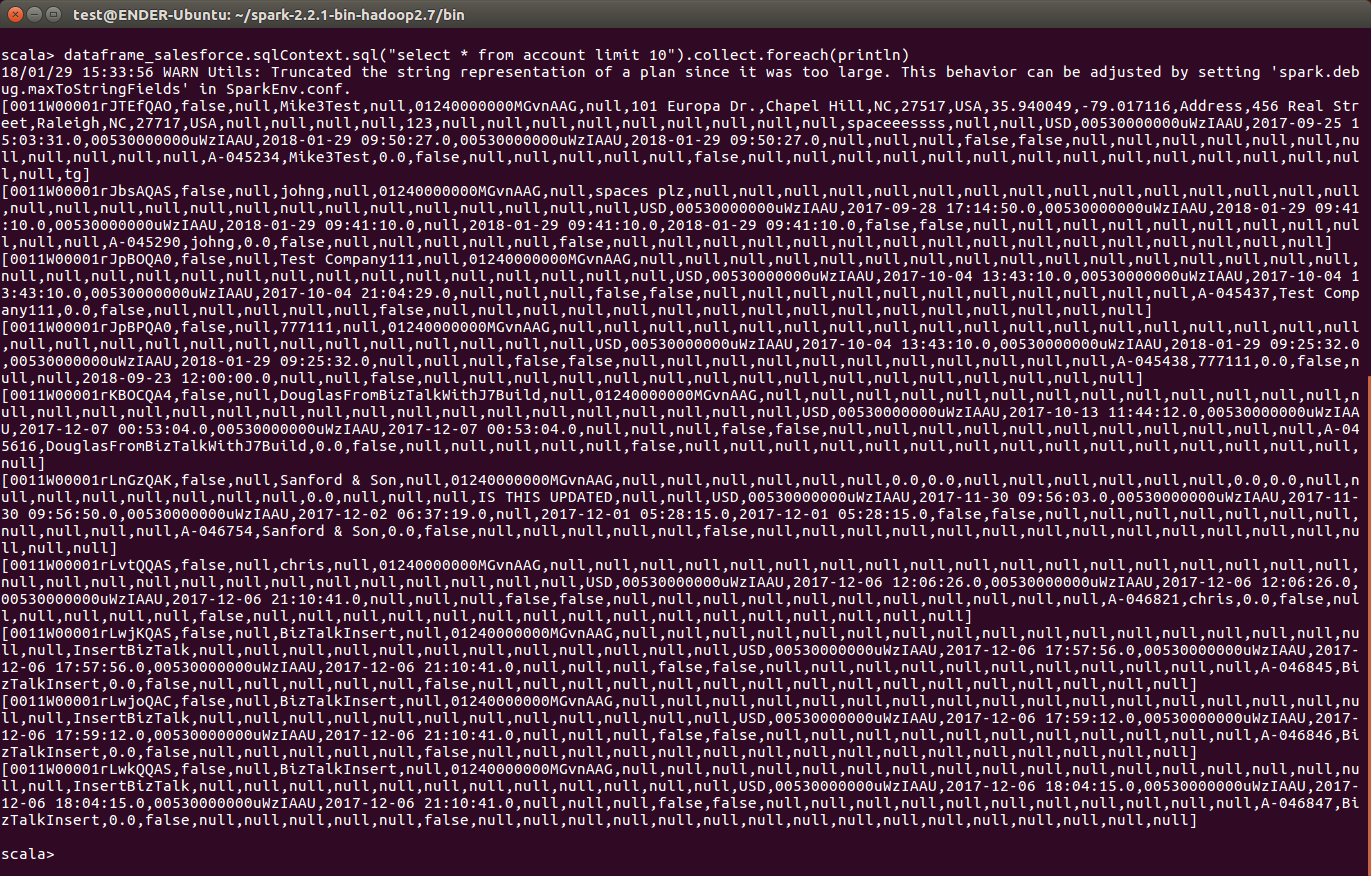Model Context Protocol (MCP) finally gives AI models a way to access the business data needed to make them really useful at work. CData MCP Servers have the depth and performance to make sure AI has access to all of the answers.
Try them now for free →How to work with Salesforce Data in Apache Spark using SQL
Access and process Salesforce Data in Apache Spark using the CData JDBC Driver.
Apache Spark is a fast and general engine for large-scale data processing. When paired with the CData JDBC Driver for Salesforce, Spark can work with live Salesforce data. This article describes how to connect to and query Salesforce data from a Spark shell.
The CData JDBC Driver offers unmatched performance for interacting with live Salesforce data due to optimized data processing built into the driver. When you issue complex SQL queries to Salesforce, the driver pushes supported SQL operations, like filters and aggregations, directly to Salesforce and utilizes the embedded SQL engine to process unsupported operations (often SQL functions and JOIN operations) client-side. With built-in dynamic metadata querying, you can work with and analyze Salesforce data using native data types.
About Salesforce Data Integration
Accessing and integrating live data from Salesforce has never been easier with CData. Customers rely on CData connectivity to:
- Access to custom entities and fields means Salesforce users get access to all of Salesforce.
- Create atomic and batch update operations.
- Read, write, update, and delete their Salesforce data.
- Leverage the latest Salesforce features and functionalities with support for SOAP API versions 30.0.
- See improved performance based on SOQL support to push complex queries down to Salesforce servers.
- Use SQL stored procedures to perform actions like creating, retrieving, aborting, and deleting jobs, uploading and downloading attachments and documents, and more.
Users frequently integrate Salesforce data with:
- other ERPs, marketing automation, HCMs, and more.
- preferred data tools like Power BI, Tableau, Looker, and more.
- databases and data warehouses.
For more information on how CData solutions work with Salesforce, check out our Salesforce integration page.
Getting Started
Install the CData JDBC Driver for Salesforce
Download the CData JDBC Driver for Salesforce installer, unzip the package, and run the JAR file to install the driver.
Start a Spark Shell and Connect to Salesforce Data
- Open a terminal and start the Spark shell with the CData JDBC Driver for Salesforce JAR file as the jars parameter:
$ spark-shell --jars /CData/CData JDBC Driver for Salesforce/lib/cdata.jdbc.salesforce.jar - With the shell running, you can connect to Salesforce with a JDBC URL and use the SQL Context load() function to read a table.
There are several authentication methods available for connecting to Salesforce: Login, OAuth, and SSO. The Login method requires you to have the username, password, and security token of the user.
If you do not have access to the username and password or do not wish to require them, you can use OAuth authentication.
SSO (single sign-on) can be used by setting the SSOProperties, SSOLoginUrl, and TokenUrl connection properties, which allow you to authenticate to an identity provider. See the "Getting Started" chapter in the help documentation for more information.
Built-in Connection String Designer
For assistance in constructing the JDBC URL, use the connection string designer built into the Salesforce JDBC Driver. Either double-click the JAR file or execute the jar file from the command-line.
java -jar cdata.jdbc.salesforce.jarFill in the connection properties and copy the connection string to the clipboard.
![Using the built-in connection string designer to generate a JDBC URL (Salesforce is shown.)]()
Configure the connection to Salesforce, using the connection string generated above.
scala> val salesforce_df = spark.sqlContext.read.format("jdbc").option("url", "jdbc:salesforce:User=username;Password=password;SecurityToken=Your_Security_Token;").option("dbtable","Account").option("driver","cdata.jdbc.salesforce.SalesforceDriver").load() - Once you connect and the data is loaded you will see the table schema displayed.
Register the Salesforce data as a temporary table:
scala> salesforce_df.registerTable("account")-
Perform custom SQL queries against the Data using commands like the one below:
scala> salesforce_df.sqlContext.sql("SELECT Industry, AnnualRevenue FROM Account WHERE Name = GenePoint").collect.foreach(println)You will see the results displayed in the console, similar to the following:
![Data in Apache Spark (Salesforce is shown)]()
Using the CData JDBC Driver for Salesforce in Apache Spark, you are able to perform fast and complex analytics on Salesforce data, combining the power and utility of Spark with your data. Download a free, 30 day trial of any of the 200+ CData JDBC Drivers and get started today.



